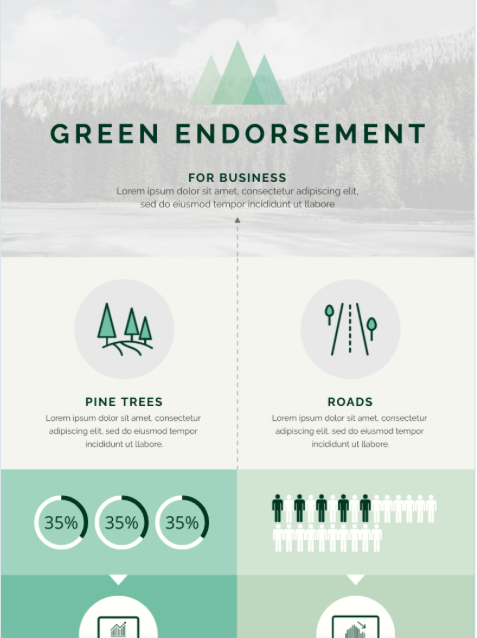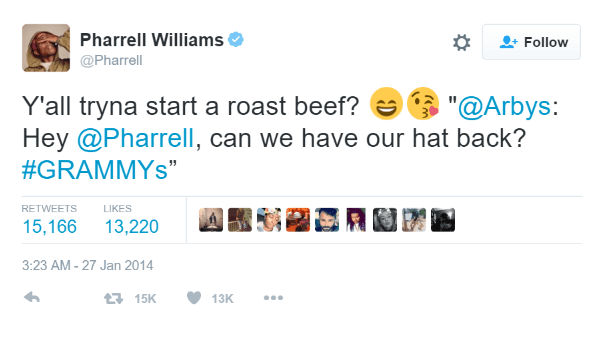Social media is a powerful tool for marketers.
Unlike most forms of customer outreach and branding, it creates an opportunity to initiate and maintain a conversation with your targets.
This, in turn, lets you speak directly to them, address their needs, and explain why you offer the best solution.
But to get this started, you have to have the type of content that will first get their attention and then encourage interactions.
And for maximum exposure, you want something they’ll share.
This brand evangelizing lets you break out from your own circle of contacts and followers and tap into new groups to which you otherwise wouldn’t have been exposed.
So, how do you create shareable content that others will want to repost?
That’s exactly what we’re going to look at in this guide. We’ll examine different types of shareable content, what makes content shareable, and give you examples of formats you can employ.
Ready to get started? Let’s go.
Creating Shareable Content
If you’re Beyoncé, you can probably skip this section.
For anyone else, who doesn’t have tens of thousands of adoring fans who will repost anything you share, let’s take a look at some of the common features you’ll find in highly-shared content:
- It’s useful – People share content they find helpful with their friends and family, so they can also get help.
- It’s entertaining or amusing – Everyone loves to laugh. If you can make your target audience laugh, they’ll pass on that tickling item to others.
- It tells a compelling story – Since the first cavepeople gathered around a fire, humans have always loved discovering and sharing stories.
- It takes a clear stance about your values – No one will retweet something that says, “Both sides raise valid points.” Don’t be afraid to take a stand if it aligns with your values. Others who agree will share it.
- It has a visual component – While it can go viral with a text-only post, it’s a lot harder than something with a visual component.
- It’s timely – Latching on to trending cultural topics will generate a lot more exposure than a stale and outdated reference or meme. This includes “Keep Calm & (literally anything)”, jokes about Harambe, and any references to “all the feels.”
- It’s original – If you’re just recycling content that’s readily available, it will be largely ignored. Look for unique angles and make something new.
Now that we’ve discussed what makes content shareable, let’s dive into different types of content you can use to generate shares.
Types Of Sharable Content
1. Infographics
32.5% of marketers say they use infographics more than any other type of visual in their visual content marketing efforts.
Why? Because they provide information in an easily understood and digestible format.
 Image from author, December 2022
Image from author, December 2022A versatile medium that can be employed for many different purposes, infographics are visual storytelling tools. Some of their more common uses include:
- Timelines – Used to show planned steps, tell the history of an organization, or discuss future projections.
- Statistical – Numbers make a powerful point. Creating infographics with statistics gives your viewers an easy way to understand and retain specific data.
- Flowcharts – Breaking down components into steps, flowchart infographics can be a great way to simplify complex tasks.
- Comparison – Infographics can be the perfect way to list various options’ pros and cons or differences in a head-to-head format.
- Maps – Nothing conveys geographical information quicker than a map, which makes them perfect as infographics.
2. How-To Guides
Life is full of problems and hassles – and most people are incredibly grateful for any tips that can help them save time or energy.
They appreciate learning a new or better way to do things and want to share this new knowledge with their social or business circles.
That’s why how-to guides are incredibly shareable on social media. They can be videos, blog posts, or even infographics. Here’s an example:
Curious … How do you become an SEO freelancer? What does an SEO freelancer do? Most importantly, how does an SEO freelancer get clients?
And for our freelancers out there grinding, what’s your number one source for new business? https://t.co/HVSv95OTva pic.twitter.com/YJEdkVAAoh
— SearchEngineJournal® (@sejournal) December 8, 2022
Whether you’re trying to show existing customers the easiest way to use your product, help them envision a better quality of life, or navigate a mechanical process, step-by-step guides are the answer.
And that makes them popular shares.
3. Lists/Listicles
Not to get too meta on you, but this piece is a great example of our next type of shareable content.
Known as a listicle (a portmanteau of list and article), posts like this one are a reliable way to generate social traction.
There are two main reasons for this:
- They set expectations upfront – A headline of “5 Foods That Fight Belly Fat,” immediately tells you what the article is about and what readers will receive from reading it.
- They’re scannable – A study from 2008 found web users only read around 28% of the words on a page. Most people are skimming for the highlights and main points, which list posts make clear.
Let’s take a look at 17 types of marketing content and learn how you can use them to make a bigger splash with your marketing. via @BrianFr07823616: https://t.co/KnwP0aMxr4 #marketing #contentmarketing #contentstrategy #SEO
— SearchEngineJournal® (@sejournal) December 7, 2022
You can also share images with graphic representations of lists.
4. Videos
Whether it’s a first-person view of what a downhill skier sees or videos of people using your product, videos are an effective and share-friendly form of content.
Extremely easy to consume, video engages, entertains, and informs the audience in a familiar format.
Now consider that Americans spend, on average, 6 hours and 23 minutes per day watching video content on their mobile devices.
Dive into Wakanda’s rich comic book history with the family lineage of its ruler, the Black Panther. Long live the king. 👑 pic.twitter.com/NN4ktZ1VqO
— Marvel Entertainment (@Marvel) November 25, 2022
These run the gamut from music videos to influencer videos to sports clips. And they all have one thing in common (aside from being videos, obviously) – they generate a lot of shares.
5. Memes
Since the advent of the internet age, memes have been a big part of online culture. Memes are shareable cultural “inside jokes,” and are usually funny and relatable.
They’re also extremely popular with younger people. 55% of internet users between ages 13 and 35 share memes every week, while 30% share them every day.
That’s a lot of brand exposure if you can get them to share something from your social accounts.
Just make sure your meme content is with the times.
Nothing gives off “How do you do, fellow kids” vibes like a meme format that hasn’t been used since 2015.
6. Current Events/Limited Time Promotions
Breaking news makes for highly shareable social content.
Social media has become the dominant news platform, with 71% of Americans getting their news via Facebook, Twitter, and similar sites.
But if you’re not in the news business – and most of you probably aren’t – it can be difficult to jump on these “hot” stories. And if you’re not in the news business, you probably don’t want to anyway.
So, what do you do?
The answer is to use limited-time offers. Create posts advertising a 30% off sale at your business, and your followers will share it with their friends who have similar needs for your product or services.
Or use current events as a way to generate extra exposure. It can either be something related to your field or something completely random that you can link to your brand in a clever way.
For example, who could ever forget Arby’s epic Twitter “beef” with Pharrell Williams?
 Screenshot from Twitter, January 2014
Screenshot from Twitter, January 2014And keep an eye on trending hashtags to see if there are any you can use to your advantage.
7. Heartwarming Stories
People love feel-good stories. And just as important, they like passing them on so others can feel good too.
Content that can inspire strong positive emotions tends to get passed around.
This can either be things like posts about charitable work your business just did or even content that encourages others to dream about something good, for example, “how to make your wedding day the best ever.”
The following statement was released in regards to Brittney Griner’s return home: pic.twitter.com/p0D0nhaNDW
— WNBA (@WNBA) December 8, 2022
8. Interactive Content
Thanks to advances in technology, people expect to be able to engage with content. That means they don’t want marketing to speak at them; they want something they can interact with.
From BuzzFeed quizzes to playable ads to polls, the internet age has led to an audience that wants to be part of the story, not just listen to it.
 Screenshot from Facebook, December 2022
Screenshot from Facebook, December 2022Give your audience more than something to read; instead, give them experience. They’ll pass it along to their social media followers if it’s a good one.
9. Controversial Opinions
It has been said that all publicity is good publicity.
With this in mind, if it suits your brand, don’t be afraid to rouse a little rabble. People love getting their blood up – it’s the principle talk radio was built around.
And a study from the Wharton School at the University of Pennsylvania found that anything that evokes high-arousal emotions like anger or anxiety is often a conversation starter among audiences.
If it’s something that fits in with your brand’s image, a strategic attack on a popular stance can lead to a flood of shares, both from people who agree with your position, and those opposed to it.
Yes they do, and they made the difference! Our democracy only works when it works for everyone. Thanks to @BlackVotersMtr for all you do 365 days a year to ensure every voter’s voice is heard. https://t.co/jdEOxZBcfB
— Ben & Jerry’s (@benandjerrys) December 7, 2022
In addition to the attention this type of content attracts, it also allows you to lead the conversation. Beware; it’s easy to cross the line from being controversial to being offensive.
In general, if you’re going to use antagonism to your brand’s benefit, you need to do all the following:
- Take a stance on a popular issue.
- Explain why your stance is correct and the other is wrong.
- Back up your argument with statistics and resources from reputable sources.
- Stand by your convictions confidently.
You also need to understand that a misstep with this kind of content can have disastrous results, so use it with care.
Optimize Your Sharable Content
There are countless types of content you can use to encourage social media shares, and as you can see, there can be some overlap between these types of content.
You could have a video that is also a how-to guide or an infographic that’s also a list.
However, with planning and forethought (and a little luck), you can create the kind of social content that leads to more shares and improves your exposure.
And once you find something that’s working, don’t be afraid to use it more than once.
More resources:
- 7 Ways To Use AI Writing Tools To Generate Content Ideas
- Tips For Writing Social Media Interaction Posts That Get Noticed
- Social Media Marketing: A Complete Strategy Guide
Featured Image: Merkushev Vasiliy/Shutterstock





